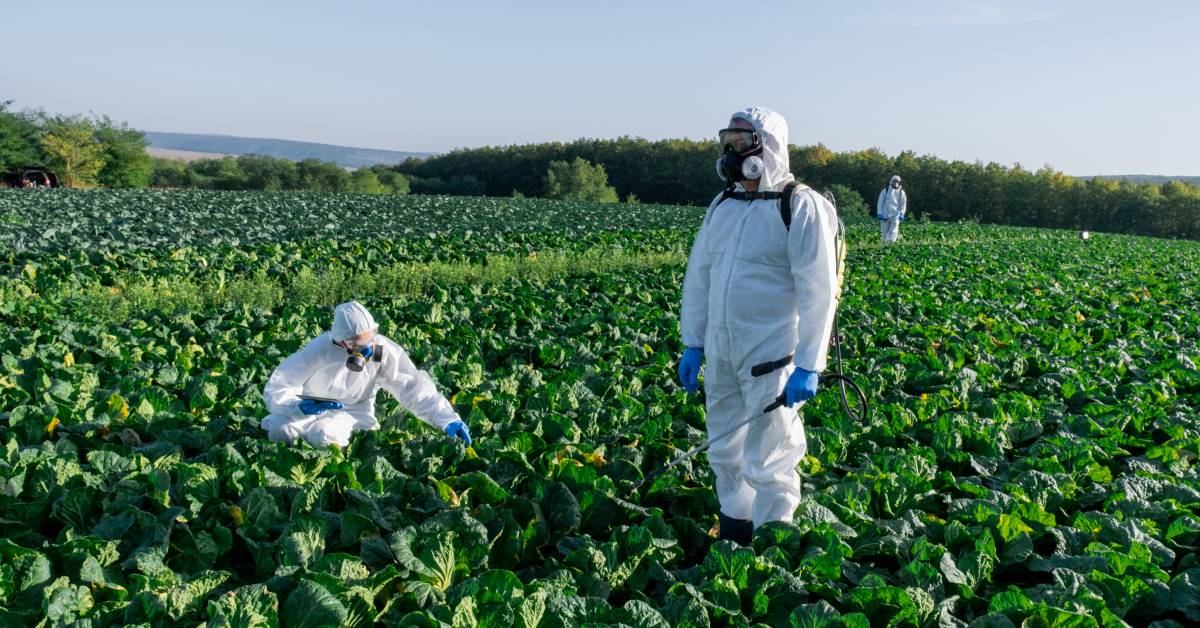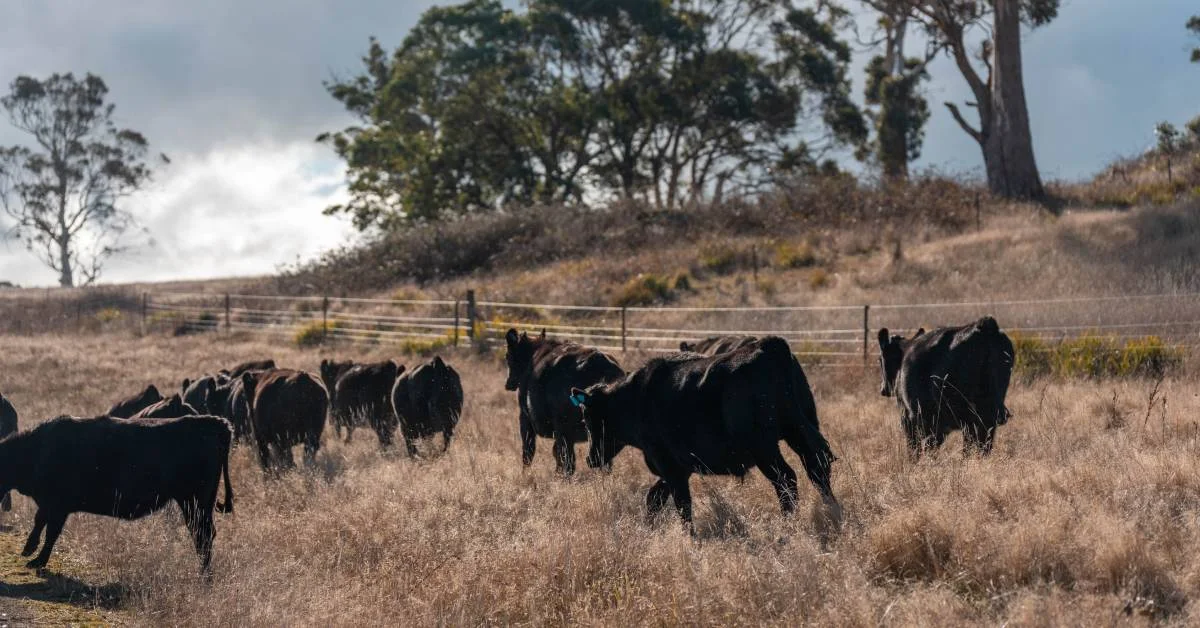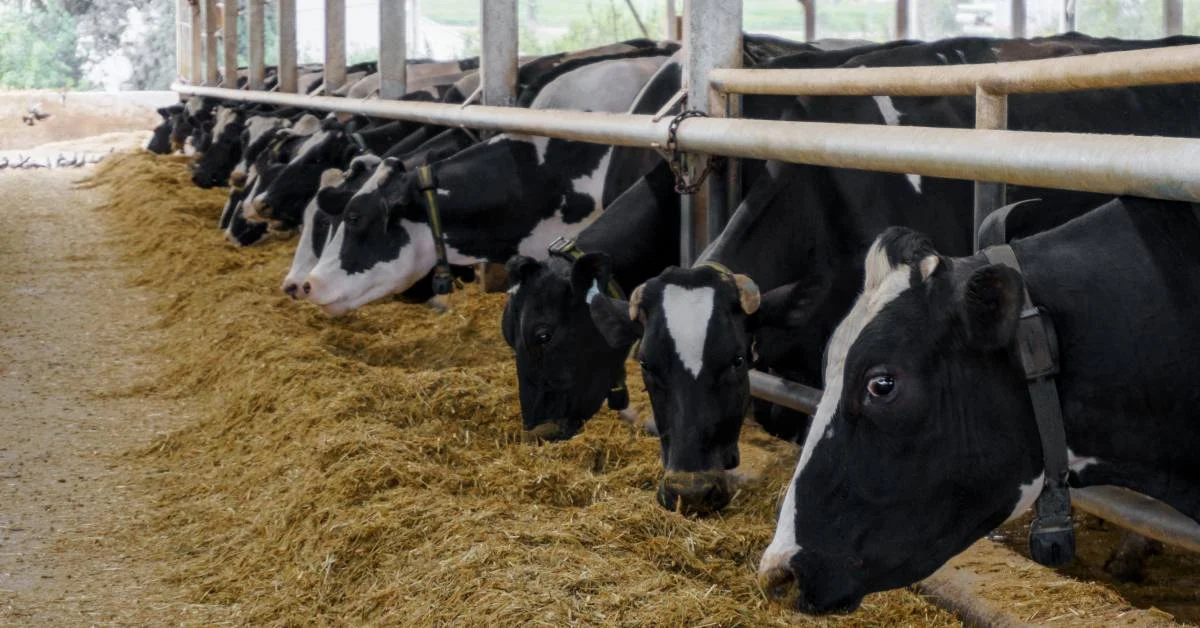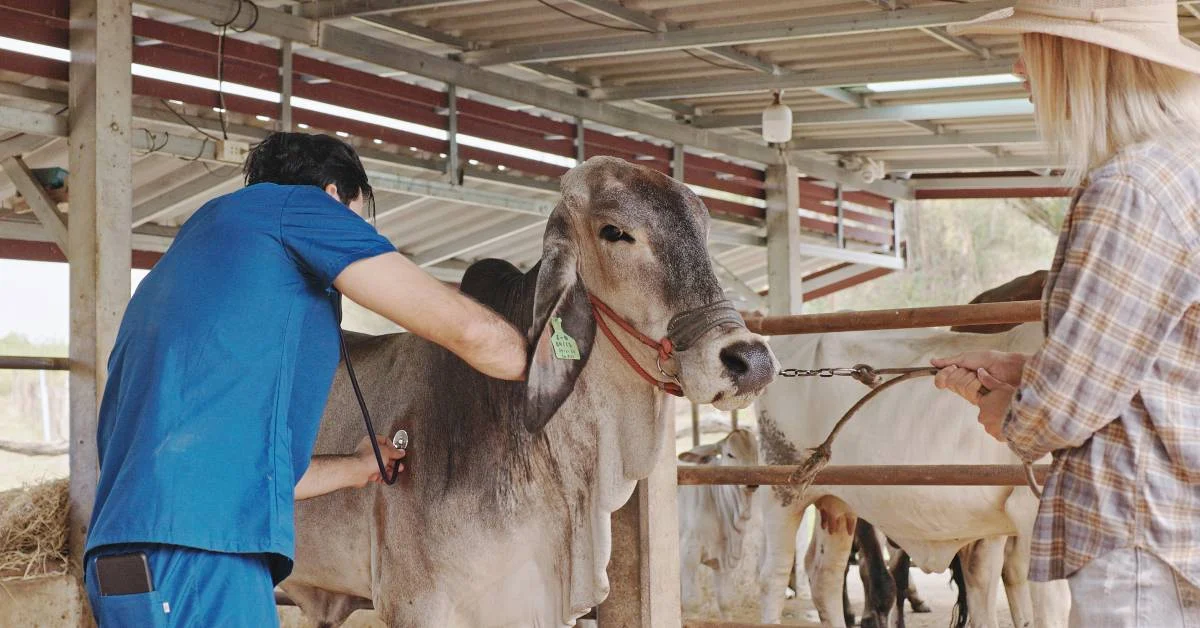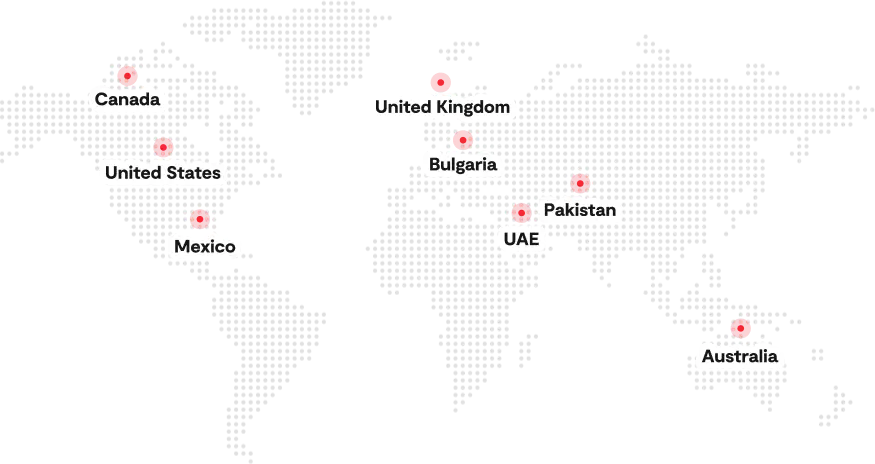Agriculture has long been one of America’s most dangerous occupations. The U.S. Bureau of Labor Statistics (BLS) recorded 574 worker fatalities in agriculture, forestry, and fishing during 2018, a fatality rate of 23.4 deaths per 100,000 workers. Even in 2019, crop and animal production accounted for 410 fatal injuries, with animal production having a fatal injury rate of 22.2 per 100,000 workers.
Tractor overturns, grain suffocation, and animal-related injuries still cause tragedies despite advances in equipment and training. These numbers underscore why proactive farm hazards identification and farming health and safety management aren’t optional but essential.
This practical guide translates safety research into actionable steps for farm owners, agricultural workers, and agtech consultants. You’ll learn about common farm hazards with validated numbers and how to control them comprehensively. The aim is to empower you to create a safer, more productive farm while complying with U.S. safety regulations.
What Counts as a “Farm Hazard”?
A farm hazard is any situation, condition, or practice on a farm that could cause injury, illness, property damage, or environmental harm. Hazards in farm settings include physical objects (machinery, vehicles), environmental factors (heat, weather), chemicals (pesticides, fertilizers), animals, and even psychosocial issues such as fatigue. Hazards are not the same as risks or incidents:
- Hazard: a potential source of harm (e.g., an unguarded PTO shaft, an untrained child near a tractor).
- Risk: the probability and severity of harm resulting from a hazard (e.g., the likelihood that someone becomes entangled in the PTO and the severity of resulting injury). A risk matrix (explained later) helps rank risks as low, medium, high, or critical.
- Incident: an event in which harm occurs (e.g., a tractor rollover that injures the operator).
Understanding these distinctions clarifies why a structured risk assessment process is necessary. During an assessment, you identify hazards, evaluate the risk they pose, and implement controls using the hierarchy of controls, as this guide follows that hierarchy throughout.
How to Run a Farm Safety Risk Assessment
A farm safety risk assessment is a systematic process to uncover hazards and decide how to control them. An effective safety program must include a proactive, ongoing process to identify and assess hazards. A five‑step approach ensures you cover all bases:
1. Scope the assessment and conduct a site walk
Decide which part of your farm you’re evaluating. Walk the site with a small team, ideally including workers, managers, and safety representatives, looking for obvious hazards. Review machinery manuals, Safety Data Sheets (SDS), and past incident reports.
2. Identify hazards using a checklist
Note machinery guards, vehicle traffic, grain storage tracking, chemical storage, animal handling areas, electrical lines, weather exposures, and worker practices. Collect existing hazard information and conduct regular inspections. Involve workers; they often know hidden dangers.
3. Evaluate risks (probability × severity)
Assign each hazard a frequency and consequence. A risk matrix combines these two dimensions to prioritise hazards. For example:
| Consequence ↓ | Frequency | Probable | Occasional | Remote | Improbable |
| Catastrophic (death, permanent disability) | Critical | High | High | Medium | Medium |
| Critical (serious injury, major property) | High | High | Medium | Medium | Low |
| Marginal (minor injury, lost work time) | High | Medium | Medium | Low | Low |
| Negligible (first‑aid only) | Medium | Medium | Low | Low | Low |
Hazards in the red “Critical/High” cells require urgent action, whereas low‑risk items can be monitored. The Penn State safety manual notes that assigning numbers or letters to each cell helps identify the most serious hazards.
4. Implement controls using the hierarchy
Try to eliminate hazards first by banning children from active work sites. When elimination isn’t possible, substitute a safer process. Engineering controls, such as ROPS on tractors or guards on PTO shafts, physically separate workers from hazards. Warnings (signs, alarms) and administrative controls help, but rely on human behavior. Personal protective equipment (PPE) is your last line of defense.
5. Monitor and review
Schedule farm audits, incident reviews, and informal walk‑throughs. It is recommended to investigate injuries, illnesses, and close calls, identifying trends and adjusting controls accordingly. Meanwhile, digital tools can help document assessments and track corrective actions.
Top 10 Farm Hazards and Practical Controls
What are the 10 most common farm hazards? Below are the most common farm safety hazards with typical incidents, and practical controls. Use this section as a quick reference when developing your hazard management plan.

1. Machinery & PTO/Moving Parts
Machinery includes tractors, balers, augers, and mixers with rotating shafts, belts, chains, and other moving parts. Power take‑off (PTO) shafts transfer energy from a tractor to equipment, but can spin at hundreds of revolutions per minute.
Common incidents:
Even in Pennsylvania, five fatalities in a recent decade involved PTO entanglement. Victims’ clothing, boots, or shoelaces get caught in an unguarded shaft, pulling them into the equipment.
Practical controls:
- Install and maintain guards: Keep OEM shields and guards on PTO shafts, belts, and chains.
- Use lockout/tagout: Shut down and isolate energy sources before servicing machinery.
- Avoid loose clothing: Tie back long hair and remove jewelry to prevent entanglement.
- Provide training: Ensure operators understand how to safely engage PTO equipment and disengage if an issue occurs.
- Implement maintenance schedules: Inspect machinery regularly and repair damaged guards.
2. Vehicles & Rollovers
Tractors, all‑terrain vehicles (ATVs), UTVs, and farm trucks are used for field work and transportation. Lack of rollover protection and uneven terrain make them dangerous.
Common incidents:
In 2018, the BLS recorded 146 fatalities involving tractors, with most victims aged 55 or older. Transportation incidents, especially rollovers, accounted for 97 of these deaths. Older tractors without rollover protective structures (ROPS) are particularly risky.
Practical controls:
- Retrofit ROPS and wear seat belts: A ROPS and seat belt reduce the risk of fatal rollovers dramatically. Always buckle up.
- Slow down on slopes: Reduce speed, avoid sharp turns, and stay clear of ditches and embankments.
- Operate ATVs responsibly: Match vehicle size and power to the task; avoid carrying passengers unless designed for two.
- Provide training: Formal operator training for tractors, ATVs, and UTVs helps prevent rollover mishaps.
- Schedule rest: Fatigue increases rollover risk; plan tasks to avoid long, late‑night tractor sessions.
3. Grain Bins, Silos & Confined Spaces
Structures used to store grain, silage, or other feed; includes grain bins, silos, manure pits, and other confined spaces.
Common incidents:
In grain storage, suffocation is a leading cause of death. Flowing grain acts like quicksand, burying a worker within seconds. Hazardous atmospheres result from decaying grain and fumigants; exposures can cause respiratory damage, heart problems, and cancer.
Practical controls:
- Implement grain‑bin entry protocols: Test air quality, lock out equipment, use a permit system and have an attendant outside.
- Use fall‑restraint harnesses: Provide lifelines anchored outside the bin.
- Avoid working alone: Always have at least two trained workers and communication equipment.
- Ventilate and monitor gases: Use gas monitors to detect oxygen deficiency or toxic gases before entry.
- Train workers: Provide rescue plan training; practice drills for engulfment and entrapment scenarios.
4. Chemicals (Pesticides, Fertilizers, Fumigants)
Agricultural chemicals are used for pest control, fertilisation, and fumigation. Exposure occurs via skin contact, inhalation, or ingestion.
Common incidents:
Among approximately two million U.S. agricultural workers, physicians diagnose 10,000–20,000 pesticide poisonings each year. The U.S. uses about 1.1 billion pounds of pesticides annually, increasing potential exposure. Symptoms range from headaches to neurological damage or cancer.
Practical controls:
- Follow label directions and SDS: Use only approved chemicals and adhere to restricted‑entry intervals.
- Wear appropriate PPE: Gloves, respirators, goggles, and coveralls protect against exposure.
- Mix and load safely: Use closed transfer systems; avoid spills and splashes.
- Provide training and certification: Ensure applicators understand safe handling and emergency procedures.
- Adopt integrated pest management (IPM): Reduce reliance on chemicals through crop rotation, resistant varieties, and biological controls.
5. Heat, Weather & Environmental Exposure
Outdoor work exposes farmers to extreme heat, cold, sun, and severe weather. Seasonal peaks and climate change exacerbate these risks.
Common incidents:
Between 1992 and 2006, 68 crop workers died from heat exposure, an annual rate of 0.39 deaths per 100,000 workers compared with 0.02 per 100,000 for all U.S. workers. A scoping review found that occupational heat‑related mortality is 35 times higher among agricultural workers than workers in other industries.
Practical controls:
- Develop a heat‑stress plan: Provide shade, drinking water, and mandatory rest breaks. Adjust schedules so heavy tasks occur early morning or evening.
- Acclimatize workers: Gradually increase workloads for new or returning workers during heat waves.
- Monitor weather and provide alerts: Use mobile apps or weather radios to warn of extreme heat, lightning, or storms.
- Encourage hydration and electrolyte replacement.
- Provide training: Recognize signs of heat exhaustion and heat stroke and act quickly.
6. Livestock Handling
Working with cattle, pigs, horses, sheep, or other animals. Animal behaviour can be unpredictable, and confined spaces amplify risk.
Common incidents:
Research shows that cattle are responsible for more injuries and fatalities than any farm animal. Livestock handling injuries rank as the second or third leading cause of on‑farm injuries and are often among the most costly. Mechanisms include being kicked, trampled, gored, or pinned. In 2015, the nonfatal injury rate in livestock production was 6.9 injuries per 100 full‑time workers, higher than crop production’s 5.7.
Practical controls:
- Design safe handling systems: Use curved chutes, solid-sided races, and non‑slip flooring to reduce balking and turning.
- Train handlers: Teach calm, low‑stress handling techniques and understanding of animal behaviour.
- Work in teams: Avoid working alone when moving or treating animals, especially bulls or cows with calves.
- Use protective barriers and gates: Provide escape routes and crush‑resistant gates to prevent pinning.
- Vaccinate animals and follow biosecurity protocols to prevent zoonotic disease transmission.
7. Electrical & Overhead Lines
Power lines and electrical equipment are used for irrigation, milking, pumping, and lighting. Tall machinery like irrigation booms and augers can contact overhead lines.
Common incidents:
62 farm workers are electrocuted each year in the United States when tractors, loaders, or irrigation pipes touch overhead power lines. Contact can cause severe burns, cardiac arrest, or falls if workers instinctively jump away.
Practical controls:
- Identify power lines and maintain clearance: Keep a 10‑foot (3‑m) minimum distance when moving augers, ladders, irrigation pipe, or elevated equipment.
- Plan routes: Mark safe travel paths for tall equipment. Use spotters when raising booms or moving grain augers.
- Stay inside the cab if contact occurs: Workers should remain in the vehicle and call for help; jumping off can create a path for electricity.
- Install ground-fault protection and maintain wiring: Inspect cords and outlets; repair damaged insulation and connectors.
- Provide electrical safety training for all workers.
8. Slips, Trips, Falls & Working at Height
Falls from ladders, roofs, haylofts, trucks, and slippery surfaces such as muddy feedlots or wet barns. Farm structures often lack guardrails or fall protection.
Common incidents:
In 2018, there were 17,390 nonfatal injuries in agriculture requiring days away from work, and 4,870 of those cases were due to falls, slips, and trips. Falls from heights, collapsing ladders, and slipping on wet surfaces account for many injuries.
Practical controls:
- Maintain good housekeeping: Remove clutter, clean spills promptly, and repair uneven flooring.
- Use proper ladders and equipment: Ensure ladders are the correct height and in good condition; secure them before climbing.
- Install guardrails and fall arrest systems: Provide harnesses and anchor points for work on roofs, silos or fruit bins.
- Choose non‑slip footwear: Encourage footwear with appropriate tread for muddy or wet conditions.
- Provide fall‑prevention training and enforce safe practices.
9. Fatigue, Lone Work & Youth on Farms
Long hours during planting and harvest, working alone in remote areas, and the presence of children and youth in farm environments.
Common incidents:
A scoping review found that farmers often work 16‑plus hours per day during busy seasons; hurry, fatigue, and stress were among the top reasons farmers reported being injured. Fatigue can impair balance, reaction time, and decision‑making. For youth, 33 children are seriously injured every day on U.S. farms, and a child dies every three days. More than 60 % of injured children were not working when hurt.
Practical controls:
- Manage work schedules: Rotate tasks, encourage rest breaks, and limit extended shifts during planting and managing harvest.
- Buddy system: Avoid working alone in remote areas; use communication devices to check in regularly.
- Promote mental health: Provide resources to manage stress and seek support.
- Safe play areas and child care: Separate children from worksites; invest in affordable child care to reduce the need to bring children into hazardous areas.
- Age‑appropriate tasks and training: Assign chores based on physical and cognitive ability; teach youth safe handling of tools and animals.
10. Solar Farm Hazards on/near Ag Land (Emerging)
Photovoltaic (PV) systems are installed on barns, rooftops, or ground arrays to generate electricity. These systems introduce new electrical and structural hazards.
Common incidents:
PV systems offer environmental benefits, but they introduce worker health and safety hazards during installation and maintenance. PV panels generate electricity whenever exposed to light; even turning off disconnect switches can’t fully de‑energize them. Modern PV arrays operate at 600–1,000 V DC, posing a risk of electric shock that can be fatal. Hazards also include electric shock, arc flash, cuts, burns, slips, trips, and falls that can occur during maintenance.
Practical controls:
- Conduct regular maintenance inspections: Follow manufacturer schedules and inspect after storms.
- Limit access: Lock control rooms, close access doors, and post signage such as “Authorized Personnel Only” and “Danger: High Voltage”.
- Reduce slip/trip hazards: Keep walkways clear of vegetation and debris; secure control boxes and wiring.
- Implement lockout/tagout: Follow step‑by‑step procedures before servicing and ensure only authorized personnel remove locks.
- Use proper PPE: Arc‑flash protection, hot gloves, fall protection, and fire‑rated clothing are essential.
- Develop an emergency response plan tailored to PV installations, including fire, lightning, or structural collapse.
Quick‑Start Checklist — Top 10 Farm Safety Tips
Adopt these top 10 farm safety tips as a practical checklist. Each tip is rooted in research and aims to reduce common farm hazards.
- Conduct daily pre‑start checks on vehicles and machinery. Inspect tires, brakes, lights, PTO guards and seat belts before use. Regular checks catch issues before they cause incidents and extend equipment life.
- Use lockout‑tagout and isolate energy sources. Before servicing equipment or entering grain bins, shut off power and lock disconnects. Communicate clearly to prevent accidental restarts.
- Follow grain‑bin entry protocols and maintain a rescue plan. Test the atmosphere, ventilate, harness yourself and station an attendant outside. Practice rescue drills so everyone knows their role during an emergency.
- Manage chemicals safely and keep SDS accessible. Store pesticides and fertilizers in locked, ventilated areas. Label containers, mix chemicals in well‑ventilated spaces, and keep SDSs readily available for first aid and emergency responders.
- Deliver regular training and document competency. Provide onboarding and refresher training for machinery, chemical handling, animal handling and emergency procedures. Keep written records of certifications and refresher dates.
- Implement a heat‑stress plan and monitor workers. Offer shade, water, and scheduled breaks during hot conditions. Educate workers to recognize heat illness and encourage them to stop work if symptoms appear.
- Maintain housekeeping and patrol for trip hazards. Keep walkways clear, repair uneven surfaces and clean up spills. Good housekeeping prevents slips, trips and falls.
- Establish a PPE program and enforce its use. Provide task‑specific PPE, helmets, hearing protection, respirators, eye protection, gloves and steel‑toe boots, and ensure they fit. Train workers on proper use and maintenance.
- Implement permit‑to‑work procedures for contractors and use induction QR codes. Require contractors to submit permits before beginning work and provide digital inductions via QR codes to ensure they understand site hazards and emergency procedures.
- Encourage incident reporting and capture near misses. Create a culture where workers report hazards, injuries, and close calls without fear of reprisal. Analyze reports to identify trends and implement corrective actions.
Take Control Over Farm Hazards with Folio3 AgTech
Managing farm safety, prevention, and farm health and safety risk assessment manually can be overwhelming. Digital platforms like Folio3 AgTech streamline the process and help you control hazards effectively. Folio3 AgTech offers:
- Digital risk assessments: Create and update hazard checklists and risk matrices on your smartphone or tablet. Assign corrective actions and track completion.
- Incident and near‑miss reporting: Capture photos, GPS location, and notes in real time; generate analytics to identify recurring problems.
- Maintenance and pre‑start checklists: Schedule and document daily inspections of tractors, ATVs, grain bins, and PV systems.
- Chemical inventory and SDS management: Store SDSs digitally, receive expiry alerts, and ensure regulatory compliance.
- Training and compliance records: Record certifications, track refresher dates, and send reminders. Provide workers with digital induction modules via QR codes.
- Heat and weather monitoring: Integrate weather data and set alerts for high heat or severe storms, helping you activate your heat‑stress plan.
Explore these solutions at Folio3 AgTech and take proactive control of your farm’s safety. By digitizing your hazard identification and control processes, you’ll protect your workers, equipment, and bottom line while meeting regulatory requirements.
FAQs
What Four Hazards might Farm Machinery Present?
Farm machinery can expose workers to four main dangers: being run over or crushed by moving equipment, getting caught in rotating or moving parts, electrocution due to contact with power lines or faulty wiring, and being struck by flying debris or ejected materials during operation.
What Kind of Risks are There in a Farm?
Farming involves five key categories of risk: production, market or price, financial, institutional, and human or personal. Production risks arise from uncertainties in natural processes that impact crop and livestock growth, including weather, pests, and diseases.
What is the #1 Cause of the Most Fatalities on a Farm?
Tractor rollovers are the leading cause of fatalities in agriculture, according to the Minnesota Department of Agriculture (MDA). These accidents often occur on uneven terrain and can be fatal if tractors lack rollover protection systems (ROPS) or if operators are not properly trained.
How Can Farmers Prevent Accidents Caused by Dangerous Equipment?
Farmers can minimize equipment-related accidents by keeping machinery well-maintained, ensuring all guards and shields are secure, and providing thorough training on safe operation. Other preventive steps include enforcing the use of personal protective equipment (PPE), maintaining clean work areas, performing pre-operation checks, removing keys when equipment is unattended, and keeping children and visitors away from active or hazardous zones.
How Often Should a Farm Conduct a Safety Risk Assessment?
A farm should complete a full safety risk assessment at least once a year and reassess it whenever major changes occur. Triggers for an immediate review include introducing new machinery, tasks, or workflows, as well as after any accidents, near misses, or updates to safety regulations.

